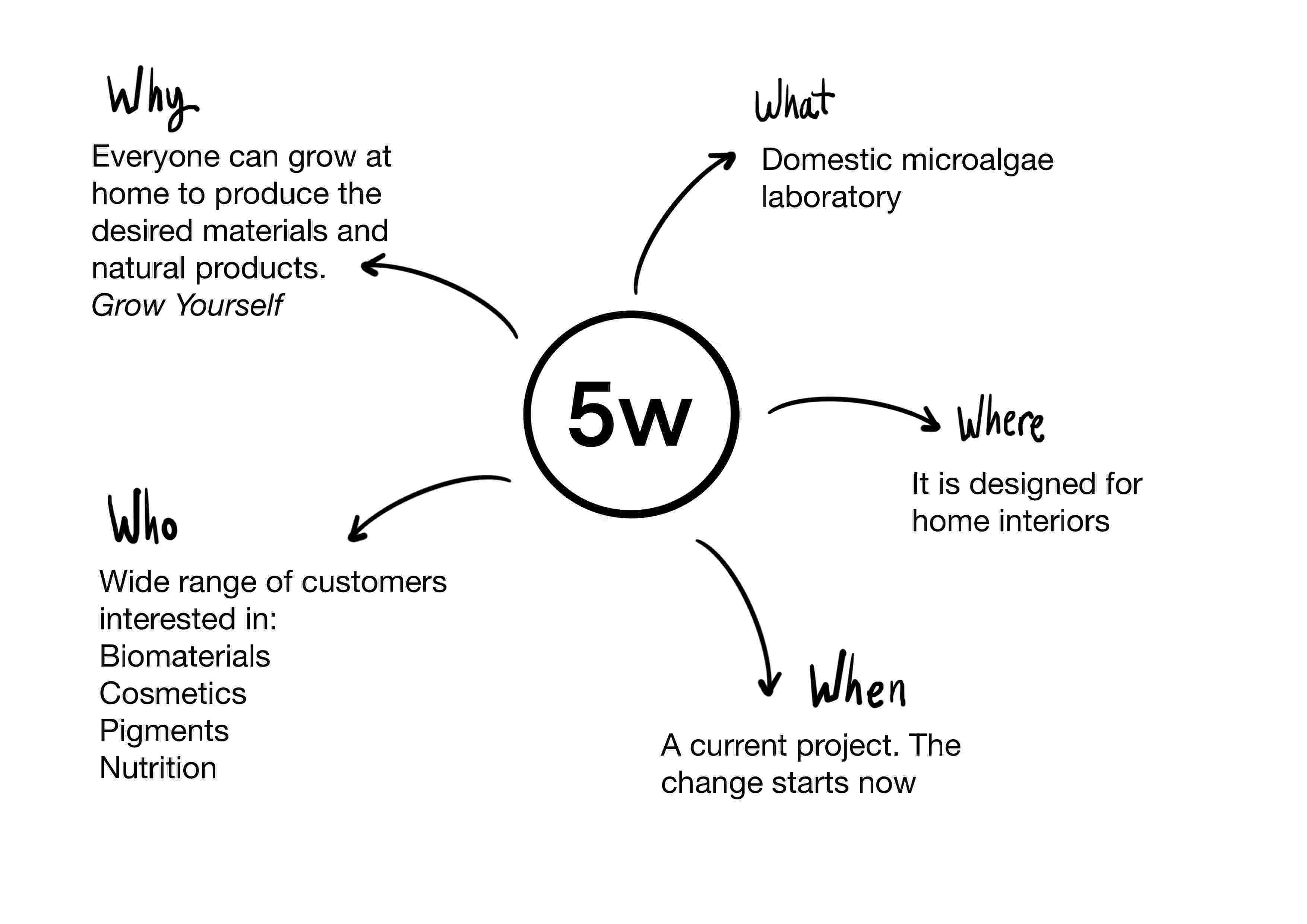Investigation & Concept¶

Future Domestic Laboratories¶
In the near future it is posible that homes may contain small labs for producing biomass in our homes. The use of biomass as a source of energy and materials is increasing in popularity due to its renewable and sustainable nature.
One potential way to produce biomass at home is through the use of bioreactors, which are devices that can grow and harvest algae or other microorganisms for use as biomass. These bioreactors can be relatively small and could potentially be installed in homes or on rooftops.
However, it's important to note that producing biomass at home is not without its challenges, including the need for specialized equipment and knowledge, as well as the potential for safety and environmental concerns. So while it's possible that some homes may have small labs for producing biomass in the future, it's also possible that this will remain a niche practice for those with a specific interest in sustainable living and alternative energy sources.
Microalgae Potential¶
Integrating microalgae production into everyday life could potentially contribute to a healthier future for ourselves and the planet in several ways.
-
Firstly, microalgae are a sustainable and renewable source of biomass that can be used as a feedstock for the production of biofuels, bioplastics, and other materials. By producing our own microalgae, we could potentially reduce our reliance on fossil fuels and other non-renewable resources, which would have a positive impact on the environment.
-
Secondly, microalgae are known to be rich in nutrients and can be used as a food source for both humans and animals. Incorporating microalgae into our diets could provide us with a source of high-quality protein, healthy fats, and other essential nutrients, which could contribute to better overall health and wellbeing.
-
Finally, microalgae have the potential to play a role in carbon capture and sequestration, which could help mitigate the effects of climate change. By growing microalgae, we could potentially capture carbon dioxide from the atmosphere and use it to produce biomass or other materials.
Of course, there are still many challenges that need to be addressed before microalgae production can become a mainstream practice in everyday life. However, with continued research and innovation, it's possible that microalgae could play an important role in creating a healthier and more sustainable future for ourselves and the planet.
The Root of My Project¶

This project will take a look into the future on the new creative disciplines. A path towards new plastic languages where art, design, technology and science merge and the artist embraces new possibilities of creation. Advances in technology and new materials imply an evolution in the production of the work, and this poses new challenges for the artist.
The root is to encourage change at home.Re-educate yourself while improving your habits with recycling, building sustainable materials with traditional habits such as fermentation, while combining it with modern products such as spirulina or other microalgae.
Concept¶
To build a self-sufficient and circular mini-laboratory that is within the reach of anyone.
What is special about this laboratory is that you can obtain biomass thanks to the cultivation of microalgae and cellulose, two great products that are growing in the world of food, cosmetics and in the prevention of plastic.
This small Lab will be able to provide you with thousands of ideas and cures in your own home and your own hands!
Project StartUp¶

BiomassLab is a project that will give a look into the future of new creative disciplines. A path towards new plastic languages where art, design, technology and science merge and the artist adopts new possibilities of creation.

The periodic table of elements is a fundamental tool for chemistry and science in general, as it allows us to understand the structure and properties of the elements and how they are related to each other.
BiomassLab aims to develop new biomaterials, non-toxic, natural and elaborated with different processes. These materials are not dangerous to produce and are therefore suitable for domestic production.
Another of the future intentions is to be able to get a personalized periodic table which will be introduced in the Kit of the project so that people interested in producing biomaterials can repeat them or improve them by introducing them in the biomassTable.
Storytelling¶




I recorded this video for the Final Project pitch week in which i explain the project approach and how i am going to organize myself to achieve the objectives. On the other hand, this was the opportunity to show the main ideas and to sell the project to the jury.
Planning¶

The way I have organized the work has been to segment ideas and move through the three different sections at the same time, prioritizing microalgae research and knowledge in January, exploring cultivation in February and building the design in March.

Since week 11 of Implication and Application, I knew that microalgae would be the key point of my project. A few months before, I started researching about these small microorganisms and I realized that they have big potential and I got into this subject completely, signing up for online classes on crops, reading about the sector, looking for projects in action... And actually, this world is already getting great results! but what motivates me most, is that it still has thousands of opportunities and much to investigate.
As we can see in the image above, this project involves many proposals, from the biological exploration of microalgae, to the experimentation of biomass as a product and the construction of a mini-laboratory based on design concepts. It is clearly an ambitious project, but really the end of fabricademy will be the beginning of a plan full of goals and challenges.